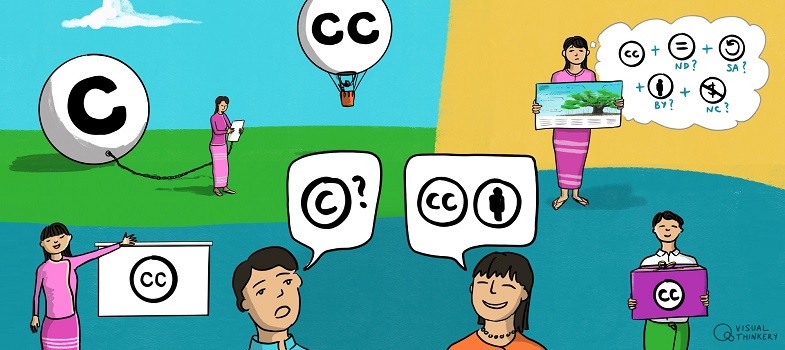Ensuring OER is accessible and visible
Let’s take a closer look at what you should consider to both make your work visible and accessible.
Accessibility and access
At its core, OER is about making sure everyone has access. Not just rich people, or people who can see and hear, or only people who can read English or Myanmar language – everyone.
As authors and institutions build and share OER, best practices in accessibility need to be part of the instructional and technical design from the start. Universities have a responsibility to ensure learning resources are fully accessible to all learners, including those with disabilities. Watch the English-language ‘Simply said: understanding accessibility in digital learning materials’ by the National Center on Accessible Educational Materials. You can also read more about best practice in openness and pedagogy in this course extract from Maricopa Community College. If you are interested in finding out more about learning design you can also review a range of resources from The Open University (UK). Could these materials be useful to colleagues?
Even if you do not develop courses or material yourself, how can you support students at your university to access resources? Myanmar National Association of the Blind has information and resources on making resources accessible, including the Burmese to Text Speech Software. Read this Frontier Myanmar article on disability rights and education (English language), which reflects on current support and access to education for disabled students in Myanmar.
Formats
Simply applying a CC licence to a creative work does not necessarily make it easy for others to reuse and remix it. Think about the following points:
- What technical format you are using for your content? (For example, PDF, MP3, or something else?)
- Can they easily edit or remix it if the licence allows?
- Can you provide the resource in multiple formats to enable editing and remix? For example, text could be shared in open doc, Word and RTF formats.
- Can people download your work?
In addition to the final ‘polished’ version, many creators distribute editable source files of their content to make it easier for those who want to use the work for their own purposes. For example, in addition to the physical book or ebook, you might want to distribute files of a CC-licensed book that enable people to easily cut and paste the content into their own works.
DRM
Using a distribution platform that applies digital rights management (DRM) such as copy protection technology to your work is another way you can inadvertently make it very hard for reusers to make use of the permissions in the CC licence. If you have to upload your CC-licensed works to a platform that uses DRM, consider also distributing the same content on sites that do not use DRM.
Note that the CC licences prohibit you from applying DRM to someone else’s CC-licensed work without their permission.
Visibility
Earlier in the course we explored a range of places where you could find CC-licensed resources. You can also share your work on these platforms. Once you have selected the best places to share your work online, ensure you provide relevant information so that others can attribute your work correctly. If you have the opportunity to add metadata (often described as ‘data about data’) or tags when you are uploading a resource, this can also make it easier to find your work.
Questions about open licences
